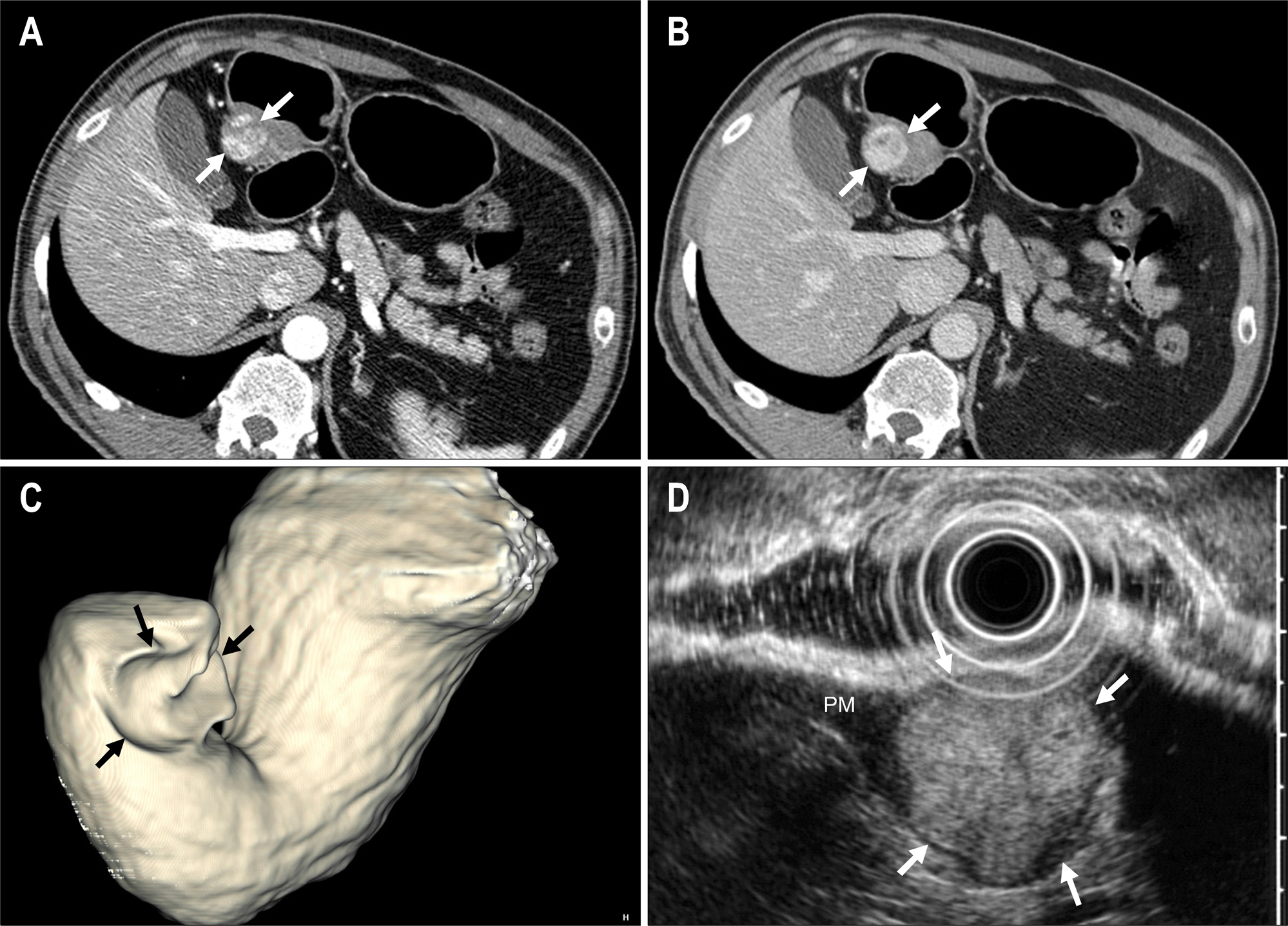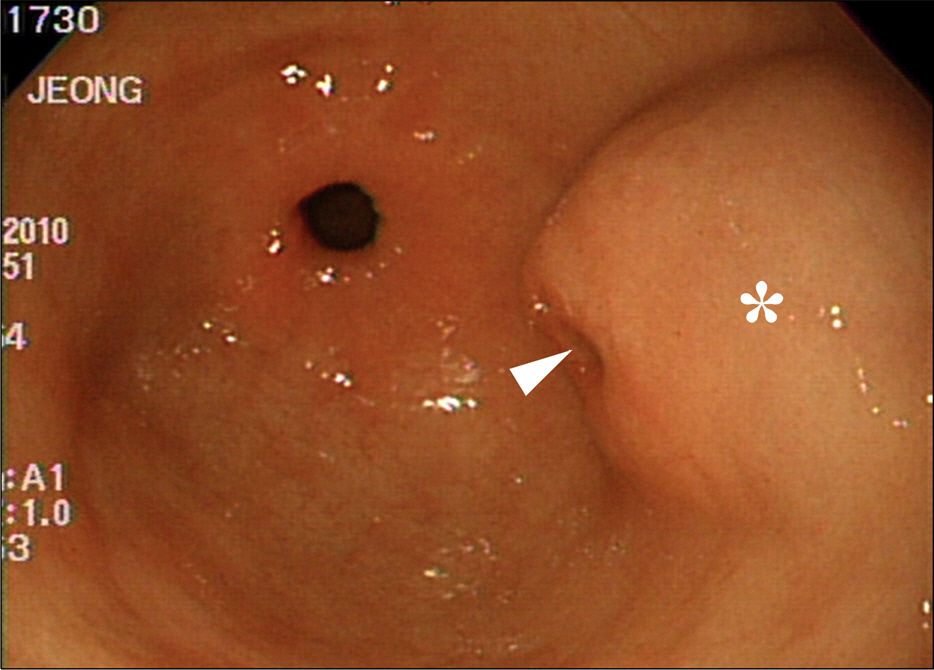Korean J Gastroenterol.
2011 Feb;57(2):134-137. 10.4166/kjg.2011.57.2.134.
Gastric Glomus Tumor Showing Hepatic Hemangioma-like Enhancement Pattern on CT
- Affiliations
-
- 1Department of Radiology, Seoul National University Hospital, Seoul, Korea. shkim@radcom.snu.ac.kr
- KMID: 1775845
- DOI: http://doi.org/10.4166/kjg.2011.57.2.134
Abstract
- No abstract available.
MeSH Terms
Figure
Reference
-
References
1. Miettinen M, Paal E, Lasota J, Sobin LH. Gastrointestinal glomus tumors: a clinicopathologic, immunohistochemical, and molecular genetic study of 32 cases. Am J Surg Pathol. 2002; 26:301–311.2. Kanwar YS, Manaligod JR. Glomus tumor of the stomach. An ultrastructural study. Arch Pathol. 1975; 99:392–397.3. Lee HW, Lee JJ, Yang DH, Lee BH. A clinicopathologic study of glomus tumor of the stomach. J Clin Gastroenterol. 2006; 40:717–720.
Article4. Hur BY, Kim SH, Choi JY, et al. Can CT features help differentiate gastroduodenal glomus tumors from other gastric submucosal lesions? KCR. 2010. 2010 Oct 18–20;Seoul, Korea.5. Park SH, Han JK, Kim TK, et al. Unusual gastric tumors: radio-logic-pathologic correlation. Radiographics. 1999; 19:1435–1446.
Article6. Cha SH, Cho SB, Kim YW, Park CM. Helical CT appearance of glomus tumor of the stomach. Eur Radiol. 2000; 10:671–673.
Article7. Patel TH, Horton KM, Hruban RH, Fishman EK. Glomus tumor of the stomach: depiction by multidetector CT and three-dimensional volume rendering imaging. Case Report Med. 2010; 2010:126095.
Article8. Harig BM, Rosen Y, Dallemand S, Farman J. The radiology cor-ner*: glomus tumor of the stomach. Am J Gastroenterol. 1975; 63:423–428.9. Park JP, Park SC, Park CK. A case of gastric glomus tumor. Korean J Gastroenterol. 2008; 52:310–314.10. Kim JK, Won JH, Cho YK, Kim MW, Joo HJ, Suh JH. Glomus tumor of the stomach: CT findings. Abdom Imaging. 2001; 26:303–305.
Article11. Hu XY, Hu CH, Fang XM, Zhang TH. Glomus tumor of the gastric body: helical CT findings. Chin Med J. 2007; 120:1289–1291.
Article
- Full Text Links
- Actions
-
Cited
- CITED
-
- Close
- Share
- Similar articles
-
- A Case of Gastric Glomus Tumor
- Diffuse Hepatic Hemangiomatosis without Extrahepatic Involvement in an Adult Patient
- A Case of a Gastric Glomus Tumor with a Positive Cushion Sign
- Wedge-shaped Parenc hymal Enhancement Peripheral to the Hepatic Hemangioma: Two-phase Spiral CT Findings
- A Case of a Symplastic Glomus Tumor




